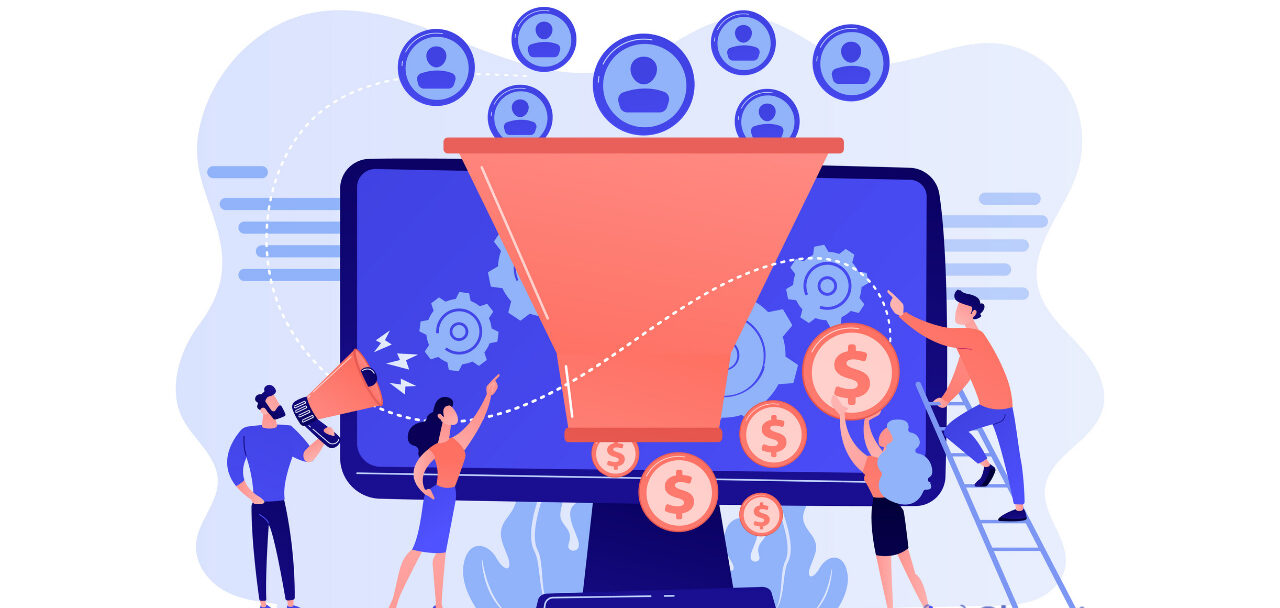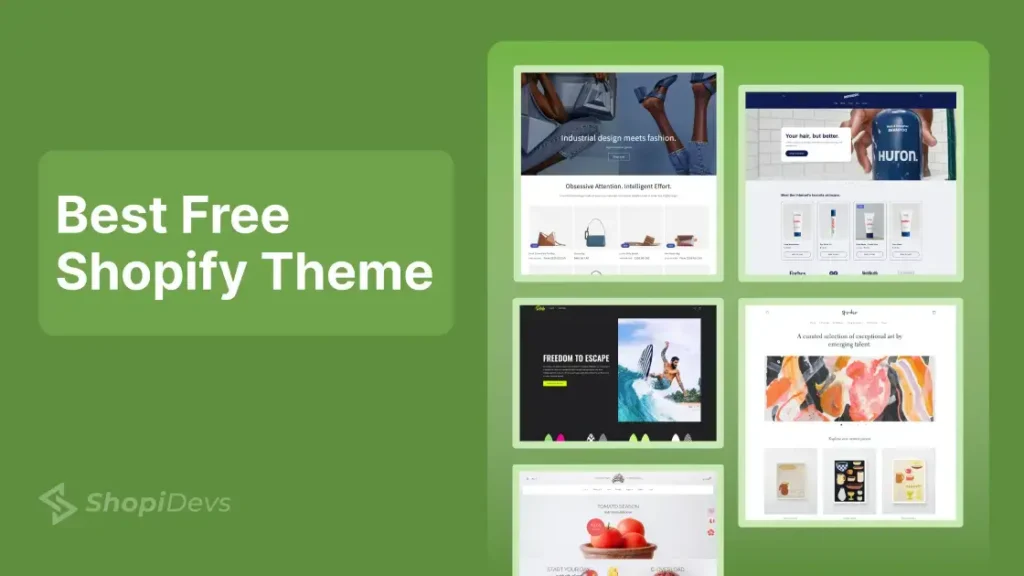If after creating your store in Shopify, you notice a low conversion rate, don’t worry, this is very common. Opening your online store is one thing, optimizing the conversion is something completely different. Fortunately, you have chosen Shopify, one of the best eCommerce platforms. There are many ways to achieve a good Shopify conversion rate and improve all results globally.
In this guide, we’ll tell you everything you need to know about conversion. Best of all, we’ll give you practical tips you can follow on how to improve your Shopify store by increasing the conversion rate.
About the Conversion
Conversion is a very broad term that is frequently used in digital marketing and eCommerce guides. Conversion refers to the action you want visitors to take on your website. It can be a subscription to your newsletter or make a purchase.
Here you will find the process of how to increase conversion rate Shopify. Since we are talking about Shopify and your online store, the conversion, in your case, is the action of buying an item from your online store.
This brings us to conversion rates. The conversion rate is the percentage of your visits that have taken the desired action. For example, make a purchase.
And finally, we come to what interests you the most – conversion rate optimization or simply CRO, for its acronym in English. The methods you can use to improve your Shopify conversion rate are CRO strategies. This includes marketing strategies and continuous improvements in search of a single goal.
The Options Offer by Shopify
Shopify is an excellent platform for both seasoned retailers and beginners. Everything you need to create your online store from scratch is available. But, you know now.
What you probably don’t know is that Shopify offers a variety of opportunities to run a constant conversion rate optimization campaign and increase those conversions.
You have full control over how you want to display your product lists, you can add multiple images – it even supports GIF files and videos. It also has many ways to organize and publish your product descriptions. Having full control over the appearance of your online store, you can experiment and find the one that attracts the most customers and offers the best shopping experience.
Shopify doesn’t disappoint on its technical side. It can be fully integrated with Google Analytics, which is useful to carry out A / B tests to identify those pages with the best performance in terms of conversion rate.
You can also add customer reviews, personal testimonials, and a live chat to further optimize the experience and win more sales. Additionally, Shopify is suitable for real-time shopping, discount codes, smart product searches, and more.
Once your operations go beyond the features of Shopify’s basic and advanced plans, you may consider purchasing Shopify Plus, so that you can access additional benefits to boost your conversion rates.
Practical Steps to Improve Shopify Conversion
If conversion rate optimization is new to you, chances are you don’t know where to start. To help you out, we’ve made a list of 10 practical steps you can take to take your online store to the next level.
1. Customization with Artificial Intelligence
The tailor-made online shopping experience is next on our list. Fortunately, using cutting-edge technologies like artificial intelligence is as simple as installing an app from the Shopify app store. It’s all about customizations as well as recommendations powered by artificial intelligence.
Make your online store smart and allow people to discover the products that might interest them. Artificial intelligence can learn from their searches and the products they have viewed to present them with relevant product offerings. This will make your visits spend more time in your store and will improve your conversion rates.
Many online stores use artificial intelligence personalization. You should consider adding it to your Shopify online store in a way that is more competitive.
2. Make Sure Your Website Performs Optimally
One of the main reasons behind a poor conversion rate is slow loading speed. It can greatly affect the shopping experience, especially at peak times. Google did a detailed study on this and found that the chances of a visitor leaving a website increase for every additional second it takes to load.
There are a few things you can do to ensure that your online store pages load quickly. As a general rule of thumb, you should organize your website, especially the home page and landing pages. For example, Hero images look very modern on home pages. You can greatly improve the loading speed by reducing the number of images in a slider. You can choose a single Hero image and replace the slider entirely.
As for product images, you don’t need to use high-quality images in your thumbnails. If you have small thumbnails, your product pages will load much faster. Since you are using Shopify, you will not need to remove any CSS, HTML, or JavaScript code manually – a process known as “minification.” Shopify will do it automatically.
Lastly, if your brand starts to grow exponentially, you may consider switching to the Enterprise version of Shopify – Shopify Plus. It offers more features to optimize online shopping performance.
3. Copy of the Products
Product pages are the places where visitors spend most of their time. If you want to convert them into customers, you must optimize the copy of your products taking into account what your customers might like. A good copy of a product must be able to do three things:
- Get the attention of visitors
- Make a positive first impression
- Prove that your store is trustworthy
Remember that you are not writing simple product descriptions and displaying products that you may like, but you are doing it for your customers. Your product copy has to be compelling and should offer all the information your visitors need to make an informed decision.
Forget about accumulating keywords and writing sentences that don’t make any sense. Be concise and list all the characteristics of your products that could potentially solve your customers’ problems, satisfy their needs and improve their quality of life.
4. Photographs of the Products
Unfortunately, online stores cannot offer customers the opportunity to inspect products in person. So the best you can offer them are product images. Yes, before we have told you to use small and optimized thumbnails to obtain a higher loading speed, but that does not mean that thumbnails are the only image you should offer.
Good product images can help potential customers find that last bit of information they need to make a purchasing decision. Add additional quality images for each of the products on your lists. If you’re into dropshipping, you can get high-quality images from manufacturers. And if you have a classic eCommerce store, you should think about investing in professional photography.
Once your business is successful, you can use Shopify Plus – you will have very interesting features available such as augmented reality or 3D images of products.
You May Also Read: 5 Must-Have Shopify Tools For Online Stores In 2021
5. Fine-Tune Your CTAs
The call to action or CTA, for its acronym in Spanish, is that short sentence that should turn your visitors into buyers. CTAs are often the main obstacle between your brand and high conversion rates. The Shopify app store includes a massive number of CTA buttons that you can quickly implement.
But, first things first, your CTA should be short and clear. It should tell your views what to do. Since the CTA is the most important aspect of your “showcase”, you should constantly try different CTAs, so that you can find the one that gives you the results you are looking for.
There are a few methods you can try to see which CTA is most compatible with your target audience:
- Create a sense of urgency with “Buy Now – Today Only, 50% Discount”;
- Make your CTA button stand out, use colors to make it stand out, and take advantage of white space to make it easier to click;
- Make the CTA immediately visible to your website visitors;
- Make sure the CTA stands out on all kinds of devices with different screen sizes;
- Do not add additional elements to your website, as they can distract visitors;
6. Optimization for Mobile Devices
With so many online stores available on mobile devices, you must ensure that your online store is suitable for both desktop computers and online devices. If your website is slow to load, the page layout looks awkward, and the copy is too long for small screens, you will most likely miss out on a lot of potential buyers using mobile devices.
Optimizing the website for mobile refers to the entire website – home page, product pages, blogs (if you have one), FAQ section, and checkout page.
Make sure to test each of these pages on your smartphone and make the necessary changes to offer a consistent shopping experience across all platforms.
7. Simplify the User Interface
Finally, we have arrived at the user interface or UI, for its acronym in English. Complex menus, search functions, and layouts can potentially increase rejection rates. To improve your conversion rates, you need to make sure that people stay as long as possible in your eCommerce store. To achieve this, your online store must be intuitive and easy to use.
Organize your products by categories, implement simple menus and check the very structure of your website. Your goal is to make the site so easy to use that even a person who has never made an online purchase can use it without any problem. As a general rule of thumb, the fewer actions the visit has to take to complete the purchase, the better your experience. This applies to both the desktop version of your website and the versions for mobile devices.
8. Free Shipping Options
One of the most attractive benefits that you can offer to your potential buyers to boost your conversions is free shipping. According to Statista, more than half of online shoppers cancel their orders if they see that the shipping costs are too high. However, you should be aware of the cost of free shipping. If you’ve started recently, free shipping for all your products is practically impossible in terms of profitability.
So what options are left for you? Free shipping does not have to be applied to a product. You can use your creativity and offer product packages with free shipping. The most common strategy of online stores is to offer free shipping depending on the amount of the purchase. For example, you can offer free shipping on orders over $ 50.
The number we have used is just an example. You will have to take into account the cost of the shipments and the desired profit margin to determine the number of orders that will get free shipping.
Conclusions
The common denominator of all the tips we have described above is the customer experience. To increase Shopify conversion rate, you need to give your target customers the best experience. Using these tips is not a one-time thing. Add these processes to your conversion rate optimization strategy to prepare your store for future challenges and ensure high conversion rates throughout the year.
I’m a digital marketing expert and mobile app developer with a deep understanding of Shopify App Store optimization. I contribute insightful articles on Shopify to help businesses thrive online.



